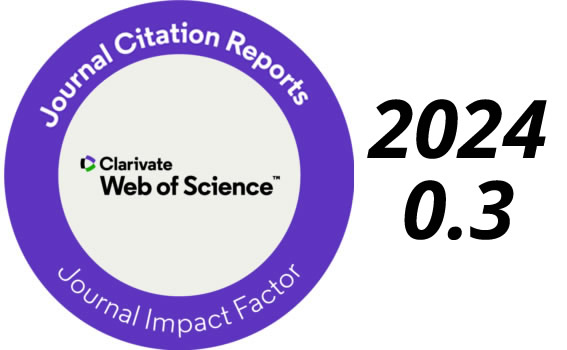Evaluation of scenarios in the validation of precipitation data from the GPM satellite for use in environmental emergencies by meteorological stations
DOI:
https://doi.org/10.24850/j-tyca-2025-06-08Keywords:
Environmental emergency, weather station, GPM satellite, data validationAbstract
After an environmental emergency related to rain, knowing the rainfall that occurred in the emergency area in those hours or day helps us determine whether it was an exceptional or regular weather event. This information allows us to evaluate the responsibility of an organization in the context of environmental oversight by the government. This work will allow us to correctly obtain the precipitation values from the GPM (Global Precipitation Measurement) Satellite, which provides data with a resolution of 0.1° equivalent to approximately 10 km, and a periodicity of 30 minutes, through an open access web platform. For educational purposes in the research, three GPM satellite data download scenarios are exhibited, two of these scenarios present omissions that result in inaccuracies, while the third scenario is executed accurately. The satellite data were processed through the ArcGis software, obtaining the value of precipitation and a linear correlation was carried out comparing them with the precipitation values of the conventional SENAMHI meteorological stations in the same geographical locations and on the same day, obtaining a value of Spearman correlation of 0.4, 0.5 and 0.6 for the first, second and third scenarios respectively. This indicates that the use of the values obtained from the GPM satellite in one day can be reliable when it is downloaded accurately and its use is recommended when there are study areas that are at a distance greater than 10 km from a meteorological station.
References
timezones. (2024). Conversión de hora de Lima a UTC. Recuperado de https://24timezones.com/es/difference/lima/utc
Basualdo, A. B. (2015). Manual de buenas prácticas para la generación, el almacenamiento y la difusión de informática climática en instituciones y organismos del MERCOSUR. San José, Costa Rica: Instituto Interamericano de Cooperación para la Agricultura.
Dávila, C., Cubas, F., Laura, W., Ita, T., Porras, P., Castro, A., Trebejo, I., Del Carpio, J., Avalos, G., Villena, D., Valdez, M., Zimmermann, R., & Menis, L. (2021). Atlas de temperaturas del aire y precipitación del Perú. Lima, Perú: Red Activa Soluciones Gráficas S. A. C.
Euscátegui, C., Vanegas, M., & Ávila, K. (2022). Plan Nacional de Respuesta Primera Temporada Lluvias (marzo-2022). Recuperado de http://portal.gestiondelriesgo.gov.co/Documents/PNC/PNR-1a-Lluvias-2022.pdf
Huffman, G. J., Bolvin, D. T., Nelkin, E. J., & Tan, J. (2020). Integrated multi-satelite retrievals for GPM (IMERG) technical documentation (News Archive). Recuperado de https://gpm.nasa.gov/sites/default/files/2020-10/IMERG_doc_201006.pdf
INEE, Red Interagencial para la Educación en Situaciones de Emergencia. (2019). Emergencia ambiental. Recuperado de https://inee.org/es/eie-glossary/emergencia-ambiental
León, F. M. (2014). Lanzado el Observatorio de Medición de la Precipitación Global (GPM). Recuperado de https://www.tiempo.com/ram/49642/lanzado-el-observatorio-de-medicion-de-la-precipitacion-global-gpm/
Mardones, M., Echeverría, F., & Jara, C. (2004). Una contribución al estudio de los desastres naturales en Chile Centro Sur: efectos ambientales de las precipitaciones del 26 de junio del 2005 en el área Metropolitana de Concepción. Investigaciones Geográficas: una Mirada desde El Sur, (38), 1-24. DOI: 10.5354/0719-5370.2004.27748
NASA, National Aeronautics and Space Administration. (2024). La misión global de medición de precipitaciones. Recuperado de https://gpm.nasa.gov/missions/GPM
Rojas, Y., Minder, J., Campbell, L., Massmann, A., & Garreaud, R. (2021). Assessment of GPM IMERG satellite precipitation estimation and its dependence on microphysical rain regimes over the mountains of south-central Chile. Atmospheric Research, (253). DOI: 10.1016/j.atmosres.2021.105454
SENAMHI, Servicio Nacional de Meteorología e Hidrología del Perú. (2020). Reporte meteorológico. Recuperado de https://www.regionlalibertad.gob.pe/servicios-en-linea/descargas/reportes-senamhi/12744-reporte-diario-dz3-08set-20/file
SENAMHI, Servicio Nacional de Meteorología e Hidrología del Perú. (2024). Datos hidrometeorológicos a nivel nacional. Recuperado de https://www.senamhi.gob.pe/?p=estaciones
UNESCO, Organización de las Naciones Unidas para la Educación, la Ciencia y la Cultura. (2020). Informe mundial de las Naciones Unidas sobre el desarrollo de los recursos hídricos (Informe 2020). Recuperado de https://www.pseau.org/outils/ouvrages/unesco_informe_mundial_de_las_naciones_unidas_sobre_el_desarrollo_de_los_recursos_hidricos_2020_agua_y_cambio_climatico_datos_y_cifras_2020.pdf
Wang, H., Li, Z., Zhang, T., Chen, Q., Guo, X., Zeng, Q., & Xiang, J. (2023), Downscaling of GPM satellite precipitation products based on machine learning method in complex terrain and limited observation area. Advances in Space Research, 72 (6), 2226-2244. DOI: 10.1016/j.asr.2023.05.057
Downloads
Published
How to Cite
Issue
Section
License
Copyright (c) 2025 Tecnología y ciencias del agua

This work is licensed under a Creative Commons Attribution-NonCommercial-ShareAlike 4.0 International License.
By Instituto Mexicano de Tecnología del Agua is distributed under a Creative Commons Attribution-NonCommercial-ShareAlike 4.0 International License. Based on a work at https://www.revistatyca.org.mx/. Permissions beyond what is covered by this license can be found in Editorial Policy.









